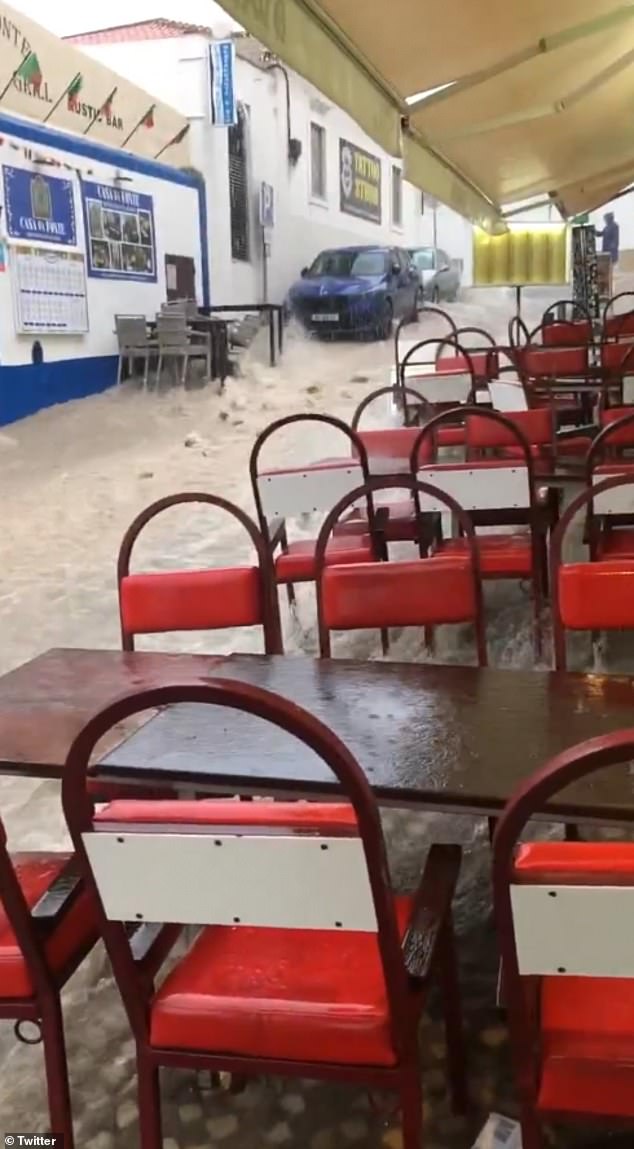This is the moment the streets of the Algarve turned into raging rivers as Europe’s flash floods hit the much-loved British holiday destination.
Terrifying videos shared on social media show water rushing through the center of Albufeira with houses and businesses submerged.
Flooding also occurred in Moncarapacho where a car was filmed being dragged by a strong current along a flooded street, local media reported.
Separate videos show mud and debris strewn across the streets of Albufeira after floodwaters subsided.
According to local reports, the torrents of water were caused by just five minutes of heavy rain on Thursday morning.
The Algarve and four other districts of Portugal have since been placed under a weather warning as the country braces for more torrential rain.
It comes after flash floods in the Valencia region of Spain killed more than 220 people and destroyed thousands of homes just over two weeks ago.
Extreme weather has continued to hit large areas of the country this week, with thousands of people evacuated from their homes in the Malaga region and much of the country still on alert as the stormy weather shows little sign of letting up.
Terrifying videos shared on social media show water rushing through the center of Albufeira with houses and businesses submerged
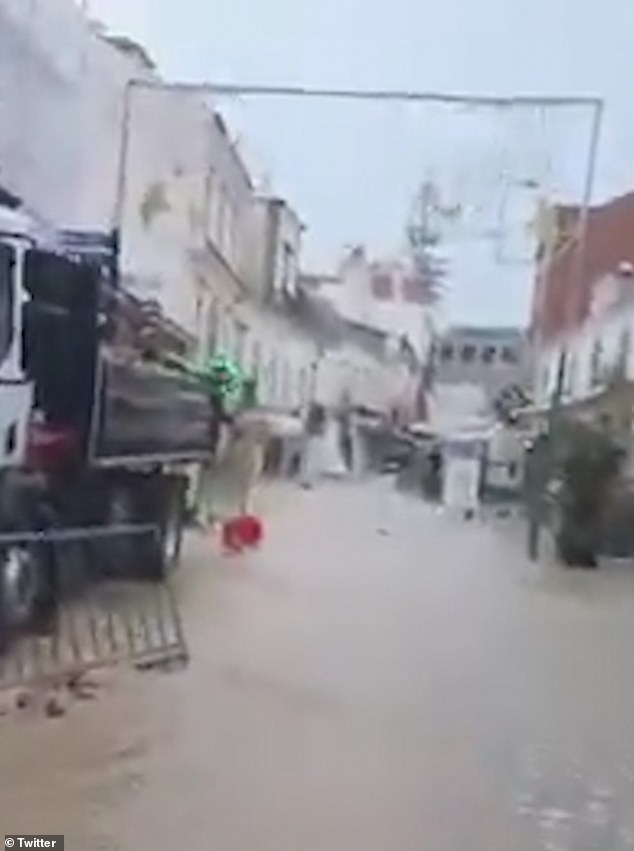
The image shows flash flooding in Albufeira in the Algarve yesterday morning.
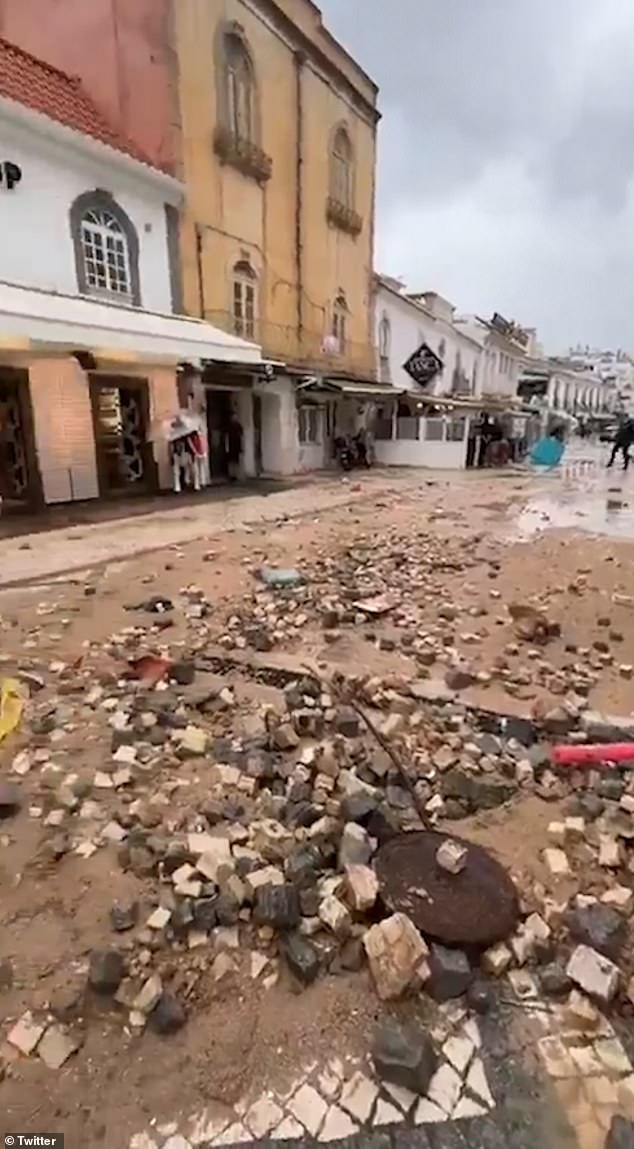
Separate videos show mud and debris strewn across the streets of the popular tourist destination after floodwaters subsided.
Images from the city of Malaga showed submerged cars and abandoned buses and sticks and other objects accumulated at the foot of the streets, which heavy rains had turned into rivers.
Meanwhile, Valencia has been bracing for another attack as coastal areas were put on high alert on Wednesday night, with forecasters warning that up to 180 millimeters (7 inches) of rain could fall within five hours.
More than two weeks after the region fell victim to flooding, large areas remain covered in mud and debris, and increasing rainfall is making the situation even more dire for cleanup volunteers and rescue workers, who They are still combing some areas for bodies.
The most up-to-date reports indicate that 223 people lost their lives and at least 31 are still missing, making it the deadliest climate disaster in Spain in decades.
The emergency response included the deployment of more than 2,000 troops from Spain’s military emergency unit, who worked alongside local rescuers and volunteers to carry out rescue and recovery operations.
An additional number of more than 30,000 volunteers, from across the country, have been mobilized to support ongoing cleanup efforts.
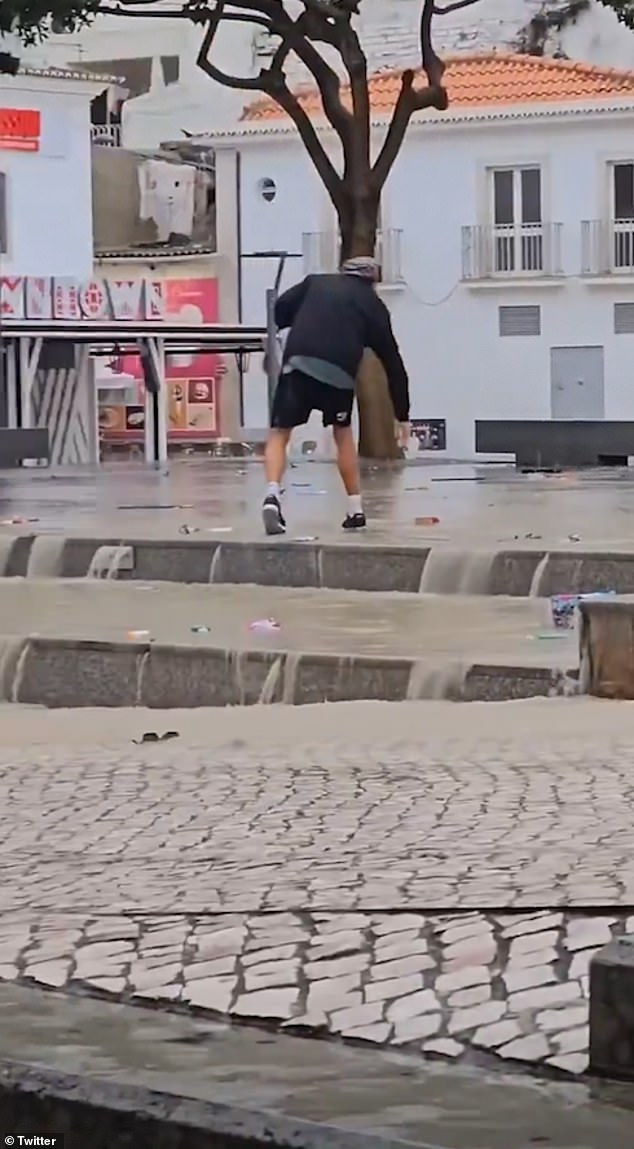
In the photo, a man walks through flash floods in Albufeira, Portugal.
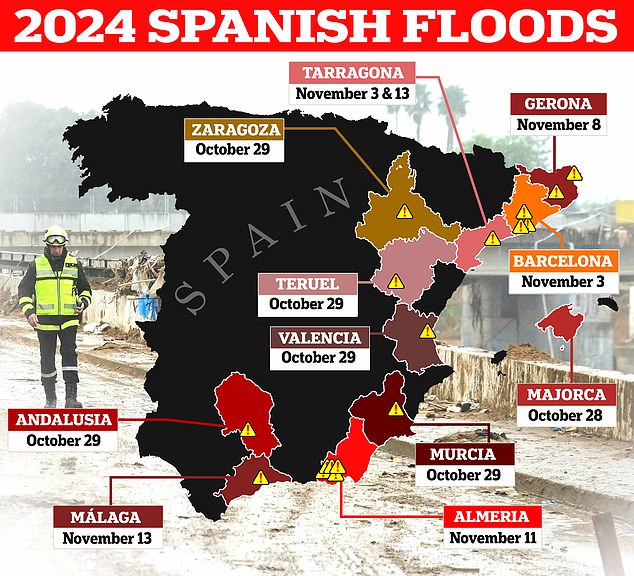
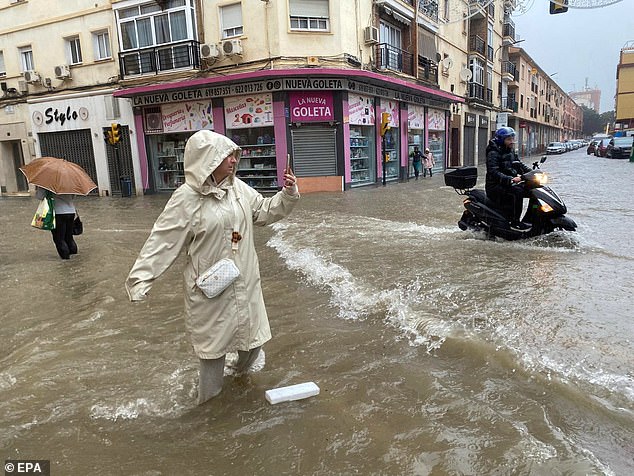
A woman takes a photograph of a flooded street in Malaga, Andalusia, Spain, November 13, 2024
To date, hundreds of families have lost their homes and thousands have had their vehicles destroyed.
Military vehicles have been patrolling the area to offer aid and have been supplying people with food and other necessities.
Many homes and public spaces were submerged and up to 155,000 homes suffered power outages.
The regions of Aragon, Murcia and Andalusia were also affected by the floods on October 29, with a 71-year-old British expatriate killed in his home in Malaga.
The phenomenon behind the relentless barrage of rain is known locally as DANA, a Spanish acronym for isolated high altitude depression.
Unlike common storms or gusts, it can form independently of polar or subtropical jet streams.
When cold air blows over the warm waters of the Mediterranean, it causes the warmer air to rise rapidly and form imposing, dense, water-laden clouds that can remain over the same area for many hours, increasing their destructive potential.
The phenomenon sometimes causes large hail storms and tornadoes, as seen this week, meteorologists say.
Eastern and southern Spain are especially susceptible to the phenomenon due to their position between the Atlantic Ocean and the Mediterranean Sea.
Masses of warm, humid air and cold fronts are found in a region where mountains favor the formation of storm clouds and rain.
Before the term DANA was coined in the early 2000s, any heavy rain in autumn, characteristic of the Mediterranean climate, used to be popularly called ‘cold drop’ in Spain and parts of France. The term is still widely used colloquially.
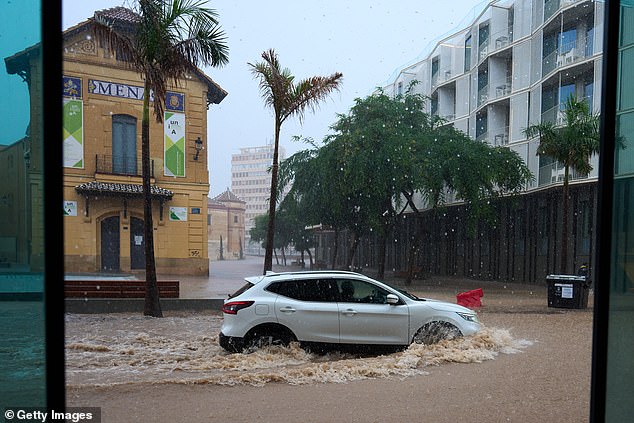
A general view during a strong storm near the El Perchel neighborhood on November 13, 2024 in Malaga
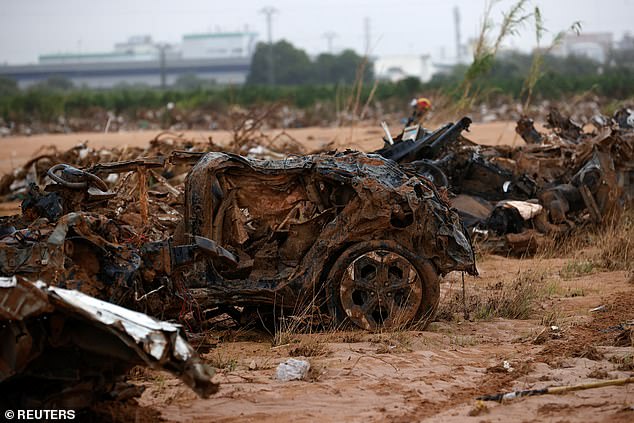
Cars destroyed by the impact of the rains in the Barranco del Poyo de Quart de Poblet, Valencia
Its origin dates back to 1886, when German scientists introduced the idea of ’kaltlufttropfen’, or cold air drop, to describe disturbances at high altitude but without an apparent reflection on the surface.
Aemet says the cold drop concept is outdated and defines DANA as a closed, high-altitude depression that has been isolated and separated from an associated jet stream.
Aemet says DANA sometimes stay stationary or even retreat, from east to west.
Enrico Scoccimarro, senior scientist at the Euro-Mediterranean Center on Climate Change, said last month that while large water spills are “typical of the western Mediterranean region and this time of year,” the recent weather event was “exceptional.” .
“Events of this type, in these areas and with this intensity, have not been recorded for several decades, we have to go back to the 60s to find similar values,” he told the Italian newspaper Corriere della Sera.
Scientists are typically cautious about linking individual weather events to climate change, but many have said that a combination of climate-related factors likely caused the dramatic weather event.
Dr Friederike Otto, Global Climate Attribution Lead at Imperial College London’s Center for Environmental Policy, said: “There is no doubt that these explosive downpours were intensified by climate change.
“With each fraction of a degree of warming from fossil fuels, the atmosphere can retain more moisture, causing more intense bursts of rain.
“These deadly floods are another reminder of how dangerous climate change has already become with just 1.3°C of warming.
“But last week the UN warned that we are on track to experience warming of up to 3.1°C by the end of the century.”


